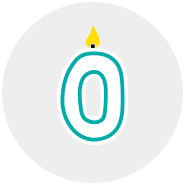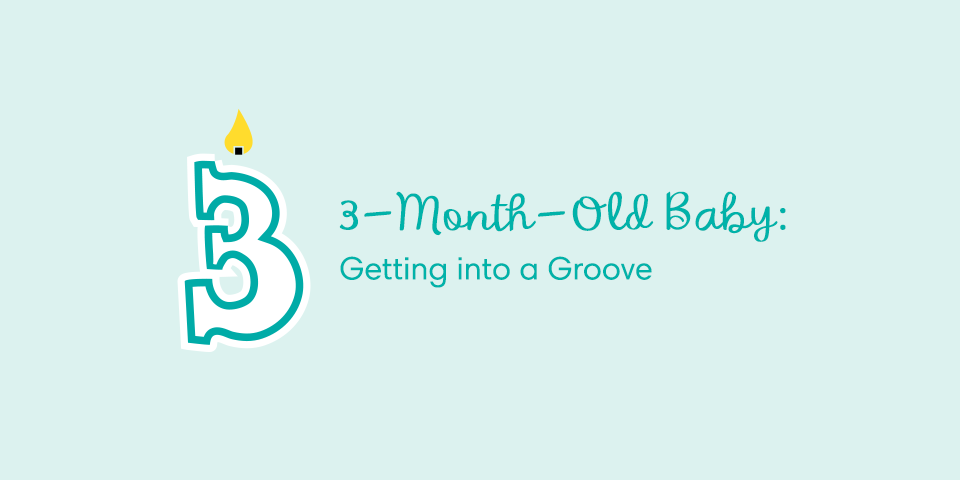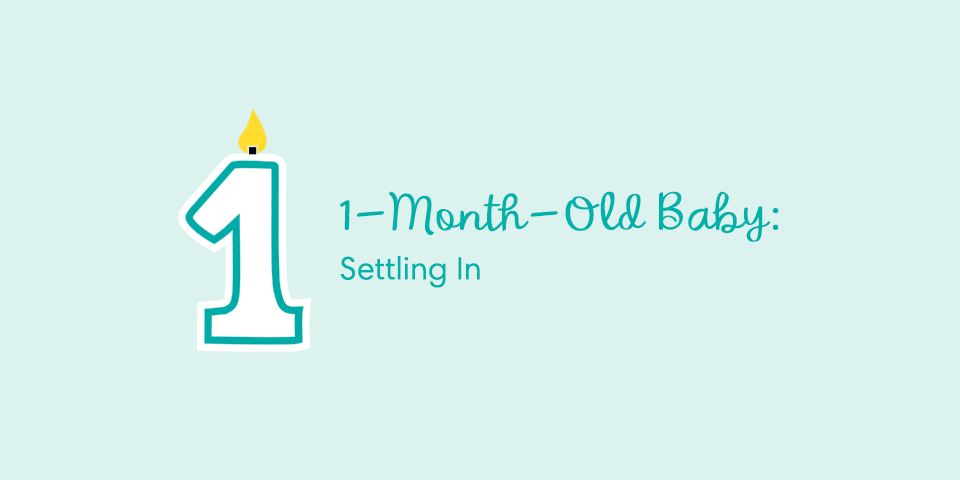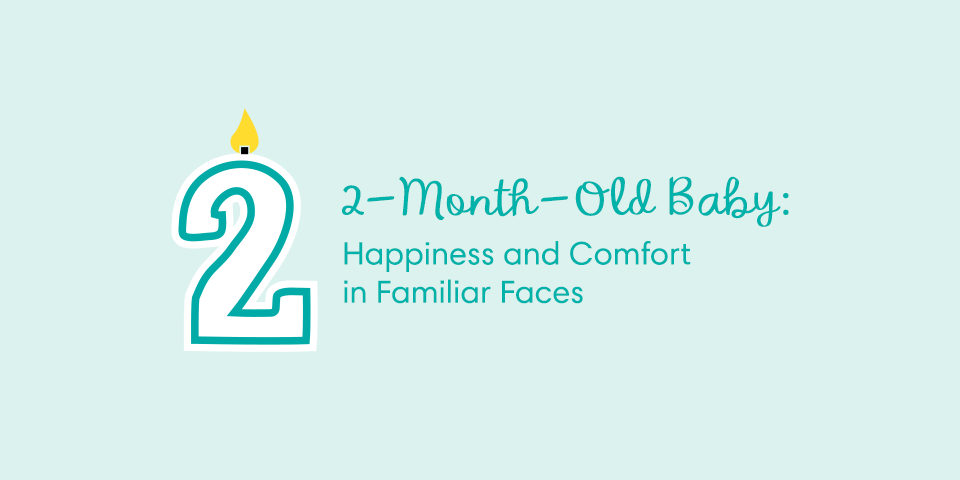Your Newborn Baby’s Development and Milestones
Wondering what’s normal in your baby’s first month? From sleep schedules and feeding needs to physical changes and developmental milestones, your newborn is growing and adapting fast, and it’s normal to have questions.
Here’s a quick look at what you can expect in weeks 1, 2, 3, and 4:
This guide breaks down everything you need to know—simply and clearly—so you can feel more confident during your baby’s first weeks.
Your Newborn’s First 4 Weeks: What to Expect Week by Week
In the first few weeks of life, your baby is adjusting to their new world—and so are you. From reflexes to sleep patterns, your little one is already making progress. These early newborn milestones may seem small, but they mark important first steps in your baby’s development.
As you watch your baby grow through weeks one to four, you might notice subtle changes in how they move, react, and interact with their surroundings. While every baby is different, here’s a look at some of the weekly milestones for newborns that may unfold during this time.
Physical Development and Growth: It’s Normal for a Newborn to Look a Little “Odd”
Your newborn is growing and changing every day, and in these early weeks, that can look a little different from what you might expect. Most babies lose about ten percent of their birth weight in the first five days, then gradually regain it over the next five. By around day 10, most have regained their birth weight. After that, they often grow quickly, especially during growth spurts around the first week, and again between the second, and between the third and sixth weeks.
Commonly, your newborn at 4 weeks will have gained about 1.5 to 2 inches in length and weigh close to 10 pounds. Boys often weigh slightly more and measure somewhat longer than girls at this stage, although the differences tend to be small.
At each checkup, your little one’s healthcare provider will measure their weight, length, and head size to track how they’re growing. These numbers are added to baby growth charts to look at your baby’s progress over time.
You might also notice that your newborn looks a little unusual at first. That’s expected and temporary. These early weeks bring a lot of visible changes, including:
These are all common for a 1-week-old newborn through a 4-week-old baby, and most changes happen on their own. If you ever have questions or concerns, your baby’s healthcare provider is the best person to ask.
Movement: Your Newborn’s Instincts Are as Strong as Their Grip
In the first few weeks, your newborn’s movements might seem quick or sudden. That’s because many of their motions are still controlled by reflexes rather than purposeful actions. Over the next few months, those jerky movements will gradually become smoother and more intentional. Some of the early newborn milestones develop gradually week by week, including reflexes that help your baby interact with the world right from the start.
Here are a few you might notice:
Cognitive Development, Eyesight and Communication of a Newborn
In the early weeks, your newborn is starting to explore the world in small but meaningful ways. Touch is one of their most developed senses at birth, and the way you hold, carry, or gently rock them helps offer comfort and security. Over time, these daily interactions support bonding and social development.
When you hold your baby, make sure to support their head and neck—they’re not strong enough yet to hold it up on their own. Gentle rocking or even a light massage may help soothe them and deepen your connection.
During this stage, your infant is also developing key sensory abilities. Some common newborn milestones are their vision, hearing, smell, and touch, including:
Although a 4-week-old newborn can’t yet see clearly at a distance or understand words just yet, they’re already detecting movement and light, and can distinguish shapes, voices, and faces up close. These sensory developments play a crucial role in how they begin to interact with you and their environment.
Crying is still your baby’s main way of communicating needs, like hunger, discomfort, or overstimulation. You may even begin to notice different types of cries over time. As your baby becomes more alert, you might hear soft coos or grunts too, especially as they start exploring how to use their voice toward the end of the month.
If your newborn is crying and doesn’t seem to need a feeding, burp, or diaper change, they may just need to be held or soothed. Cuddling, rocking, or speaking gently can go a long way. If crying persists or becomes intense, it could be a sign of colic or another underlying issue. In that case, it’s a good idea to consult your baby’s healthcare provider.
As you talk to your baby, make eye contact, or comfort them, they’re beginning to recognize these patterns as signals of safety and connection. Newborns are especially tuned in to high-pitched voices and may turn toward the sound when you speak. This kind of response is a sign they’re beginning to recognize and connect with familiar voices, an early weekly milestone for newborns that supports emotional and cognitive growth.
Behavior of a Newborn: You’ll Never Forget That First Real Smile
In the early days, you may catch your baby smiling in their sleep. While this reflexive smile isn’t social just yet, it can be a heartwarming glimpse of what’s to come. Experts believe that these early smiles may be triggered by internal activity, rather than external cues.
A more deliberate smile—one that responds to your presence—may appear toward the end of this first month or sometime in the second. Your baby might smile when you talk to them, make eye contact, or simply smile back. This is one of the most heartwarming newborn milestones, as it marks the beginning of emotional connection and communication.
You might also start noticing patterns in your baby’s temperament. Do they fuss quickly or seem content between feeds? Do they startle easily, or stay calm in new situations? Even in the first few weeks, small behaviors may give you a sense of your child’s personality. Each baby is unique, but recognizing these early behaviors is another step in understanding your little one and navigating your baby’s newborn milestones week by week.
How to Bathe a 1-, 2-, 3-, or 4-Week-Old Baby
Bathing your newborn may feel intimidating at first, but it gets easier with a bit of practice. During the first couple of weeks, it’s essential to keep the umbilical cord stump dry and clean. Until the area heals, which usually occurs by the time your newborn is about 1 to 3 weeks old, sponge baths are recommended.
Once the cord has fallen off and there’s no open skin, you can begin giving your baby a bath in a baby tub or a clean sink. Keep in mind that most newborns don’t need daily bathing. Two to three times a week is usually enough, especially if you're thoroughly cleaning the diaper area at each change.
Here are a few tips to help make those early bath times with your 1-week-old newborn to 4-week-old baby go smoothly:
Read more about how to bathe your newborn. With a little practice, bath time can be fun for both of you!
What to Do with a 1-, 2-, 3-, or 4-Week-Old Baby?
You may be wondering what activities are appropriate—or even possible—at this early stage. While much of your newborn’s time is spent feeding, sleeping, and being changed, there are still simple ways to connect and support your baby’s development. If you're unsure about anything, your little one’s healthcare provider can offer personalized guidance.
Here are a few gentle, developmentally appropriate activities to try with your 1-week-old, 2-week-old, 3-week-old, or 4-week-old newborn baby:
Even something as small as your little one turning toward your voice or watching your face during tummy time can be part of their weekly milestones. These moments of connection lay the foundation for future learning and offer you a chance to slow down and enjoy time together.
Development Tips for Your Baby’s First Month
Your little one is learning every day, and the small things you do together can make a big difference. Here are a few simple ways to support early newborn milestones while strengthening your bond:
There’s no one right way to do things—your presence and care go a long way as your little one grows through their weekly milestones.
A Day in the Life of Your Newborn Baby
While no two days will look the same, most newborns follow a rhythm that includes sleeping, feeding, diaper changes, and short periods of wakefulness. Understanding what’s typical can help you build a simple routine that works for both of you, while supporting your newborn’s milestones week by week.
Here’s a look at what your newborn’s day may include:
Staying flexible while gently encouraging a sense of routine can help both you and your baby feel more settled. Whether it’s a quiet cuddle, a midnight feeding, or a few wide-eyed moments of play, these daily experiences all support your newborn’s healthy development and your growing bond.
Feeding Your Newborn: How Much Does a 1-, 2-, 3-, or 4-Week-Old Baby Eat?
There’s no need to follow a rigid feeding schedule during the first few weeks. Instead, watch for your baby’s hunger cues to get a sense of what’s typical for them. A 1-week-old baby or 4-week-old baby may show signs of hunger by rooting, smacking their lips, or sucking on their fist.
Crying can also be a late sign of hunger, but it’s better to feed your baby before they get to this stage, rather than waiting until they’re really upset. You'll likely feed your baby at least eight times in each 24 hours, both during the day and night.
During growth spurts, which occur at different times for different babies, but often at 1 week of age and between 3 and 6 weeks of age, your little one may be hungrier than usual. When they’re full, they may look tired or fall asleep.
If you’re breastfeeding and are concerned about your milk supply or wondering whether your baby is latching or nursing properly, ask your healthcare provider or a lactation consultant for help. You can also check out this go-to breastfeeding guide we’ve created just for you!
Even if your baby is feeding well, your healthcare provider may recommend a supplement. For example, vitamin D drops are recommended for breastfed babies, and iron supplements may be recommended depending on what you are feeding your baby and baby’s overall health. It’s always best to ask your baby’s provider what’s right for your situation.
Diapering a 1-, 2-, 3-, or 4-Week-Old Newborn
It’s natural to wonder if your baby is getting enough to eat. One of the easiest ways to check is by paying attention to the diapers, how often you change their diaper, and what they contain.
In the first few days, your 1-week-old newborn will likely have thick, dark green or black bowel movements. This is called meconium, and it’s made up of the substances that filled your baby’s intestines before birth. After the meconium has passed, your baby’s stools will switch to a yellow-green color and become softer and runnier. Each baby is different, but you can probably expect at least six wet diapers and at least three or four poopy diapers a day.
Other signs your little one is feeding well include hearing them swallow while nursing or feeding, and noticing that they seem settled for a while afterward. Over time, your baby’s healthcare provider will also monitor their growth to make sure they’re getting enough nourishment.
How Much Sleep Does a Newborn Baby Need?
You might be wondering how much sleep your 1-, 2-, 3-, or 4-week-old baby needs—and the short answer is: a lot. In the first few weeks, most newborns sleep at least 16 hours in 24 hours, although the timing and length of each nap can vary from day to day and baby to baby.
Even though newborns can’t yet tell the difference between day and night, you can start to shape their sleep routine gently. Keep nighttime feedings quiet and brief. Use soft lighting, avoid play, and try to put your baby back to sleep right after feeding, always on their back. If you're wondering when your 4-week-old infant might sleep through the night, know that it’s still early. Most babies won't develop longer sleep stretches until a bit later. Patience, consistency, and safe habits go a long way.
Safe Sleep
To help reduce the risk of SIDS (sudden infant death syndrome), follow these safe sleep practices:
It’s also recommended to keep your baby’s crib in your room for at least the first six months. This setup supports safe sleep while keeping your baby close for nighttime feeds and comfort.
Your Baby’s Health
During the first month, you may encounter a few common health concerns. Here’s what to keep in mind as you care for your 1-, 2-, 3-, or 4-week-old baby:
The 0-Month Check-up and Vaccinations
Your baby will typically have a check-up within the first week after birth. During this visit, the healthcare provider will measure weight, length, and head circumference, check reflexes, and review feeding and diaper habits.
Around this time, your newborn may also receive their first dose of the hepatitis B vaccine, which is routinely recommended at birth. You might like to become familiar with the standard immunization schedule for babies and young children. Keep in mind that your baby’s healthcare provider will advise you on what immunizations are needed next for your baby.
0-Month-old Milestones Checklist
Every newborn is unique, and early development varies, but here are some common newborn milestones that many parents notice during their baby's first month. Use this list as a gentle guide to observe your little one’s progress and growth:
If something seems off or you're unsure about your baby’s development, it’s always a good idea to check in with your baby’s healthcare provider.
To Do’s and Items You’ll Need This Month
FAQS AT A GLANCE
Most full-term newborns weigh between 5 pounds 11 ounces and 8 pounds 5 ounces. Babies grow quickly in the first few weeks, especially after regaining birth weight by around day 10.
The Bottom Line
Your little one’s first 4 weeks are filled with new experiences—for both of you. From their first reflexes and feedings to those tiny sleepy stretches and occasional cries, every day brings something new to learn, love, and adapt to. These early moments, while sometimes overwhelming, are laying the foundation for your baby’s growth and your bond as a parent.
There’s no perfect way to navigate this stage, just your way. Try to rest when you can, ask for support when you need it, and give yourself grace. You’re doing more than enough, even if it doesn’t always feel like it.
And as you go through countless diapers and wipes, let Pampers lend a hand. The Pampers Rewards App makes it easy to earn Pampers cash for every purchase.
How We Wrote This Article The information in this article is based on expert advice found in trusted medical and government sources, such as the American Academy of Pediatrics and the American College of Obstetricians and Gynecologists. You can find a full list of sources used for this article below. The content on this page should not replace professional medical advice. Always consult medical professionals for full diagnosis and treatment.
- American Academy of Pediatrics. Caring for Your Baby and Young Child: Birth to Age 5, 7th ed. (New York: Bantam Books, 2019).
- CDC. "Recommended Child and Adolescent Immunization Schedule."
- Cleveland Clinic. "Baby Development: Milestones and Safety."
- HealthyChildren.org. "Baby’s First 1,000 Days: AAP Policy Explained."
- HealthyChildren.org. "Baby’s Vision Development."
- HealthyChildren.org. "Bathing Your Newborn."
- HealthyChildren.org. "Developmental Milestones: 1 Month."
- HealthyChildren.org. "First Month: Physical Appearance and Growth."
- HealthyChildren.org. "How Your Newborn Behaves."
- HealthyChildren.org. "How Your Newborn Looks."
- HealthyChildren.org. "Jaundice."
- HealthyChildren.org. "Newborn Reflexes."
- HealthyChildren.org. "Newborn Screening Tests."
- HealthyChildren.org. "Newborn Smell and Touch."
- HealthyChildren.org. "Parenting Your Infant."
- HealthyChildren.org. "Vitamin D & Iron Supplements for Babies."
- HealthyChildren.org. "Your Baby’s First Smile."
- HealthyChildren.org. "Your Baby’s First Days: Bowel Movements and Urination."
- KidsHealth. "The First Day of Life."
- March of Dimes. "Touching and Holding Your Baby in the NICU."
- Mayo Clinic. "Infant Development: Birth to 3 Months."






